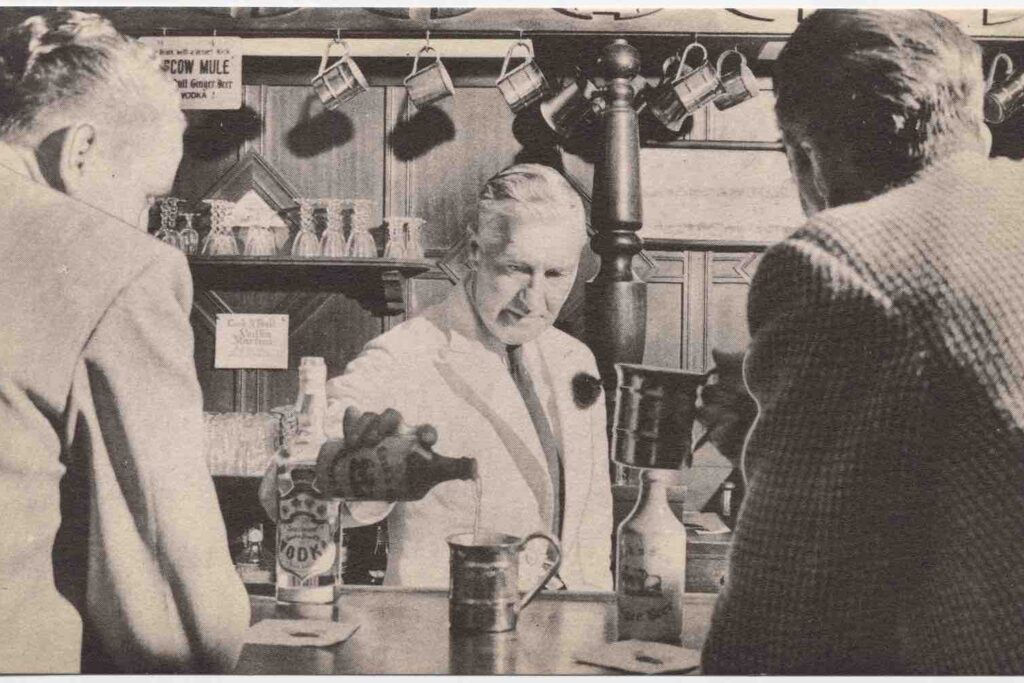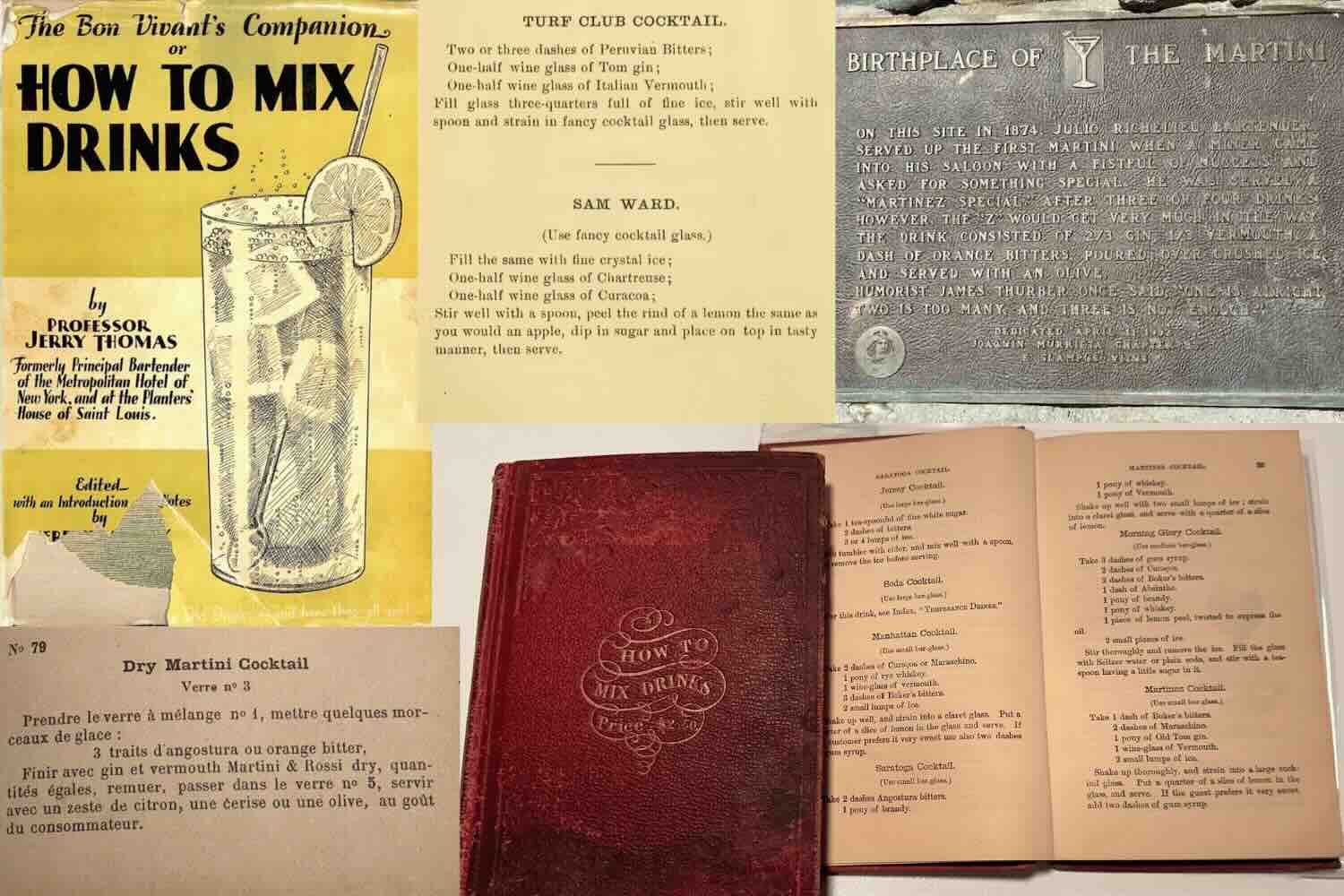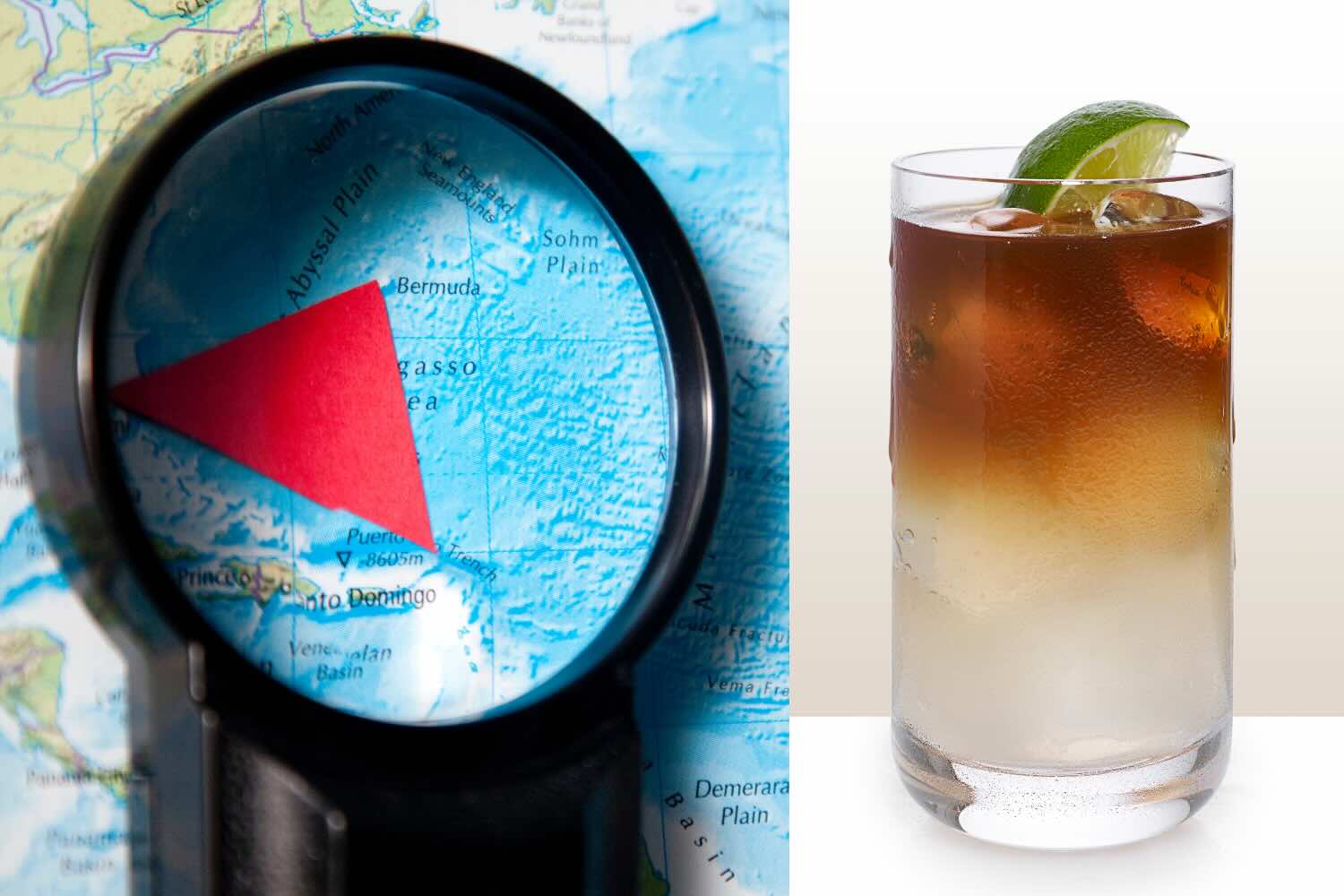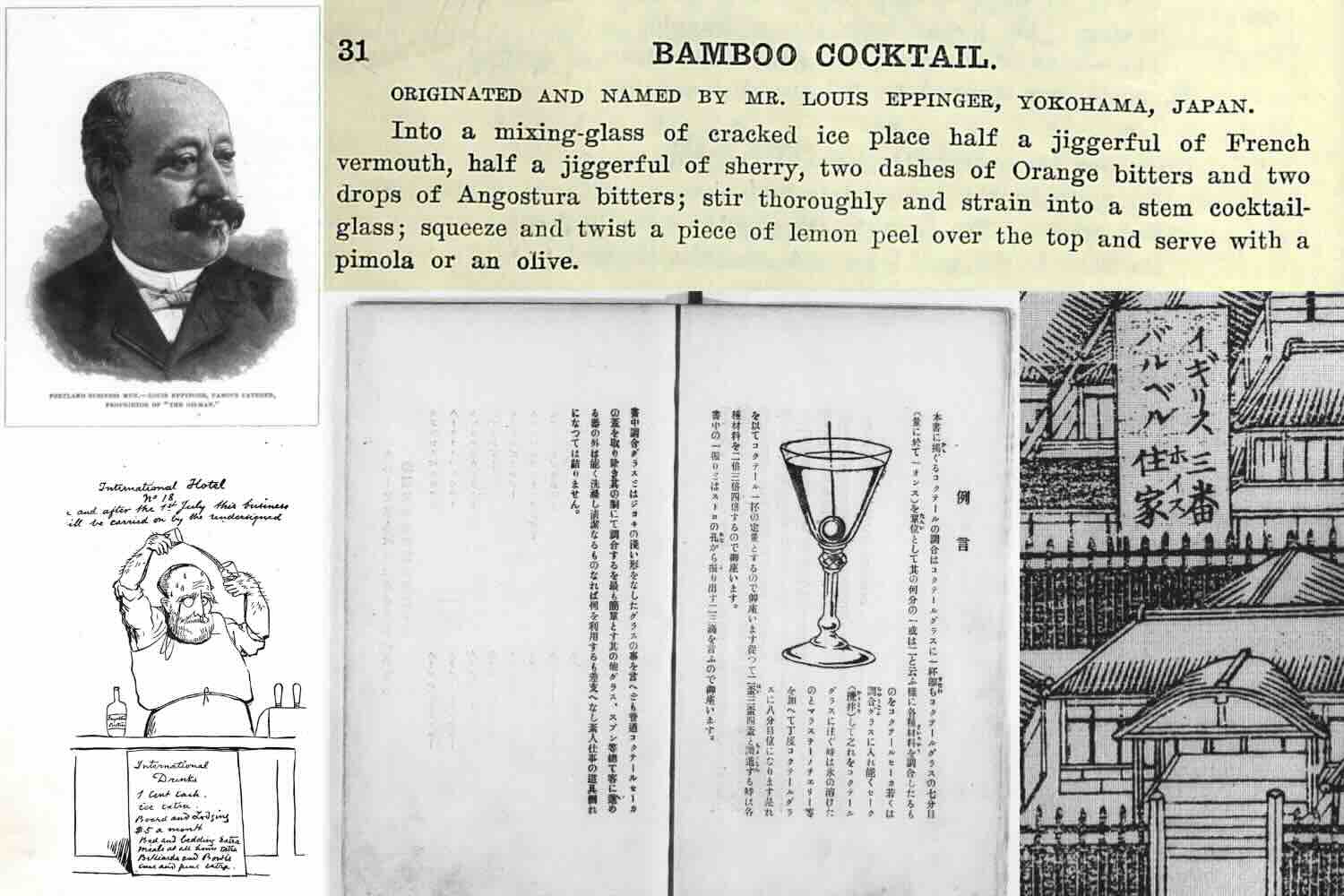È destino che ogni volta che Stati Uniti e Russia siano ai ferri corti, o che comunque i rapporti si facciano più tesi, il Moscow Mule cambi nome.
E’ successo con l’invasione della Russia in Ucraina, cambiando il nome in Kiev Mule o in Snake Island Mule ed era successo durante la Guerra Fredda.
Nel 1950, sul quotidiano St. Louis Post Dispatch, venne riportato che a in un locale serale di Hollywood la miscela di Vodka e Ginger beer non veniva più chiamata Moscow Mule, ma U.S. Mule.
E questo non fu l’unico segno di protesta che il drink subì per avvenimenti storici!
Nello stesso anno, apparve una foto sul quotidiano New York Daily News che ritraeva degli striscioni in cui due bartenders prendevano a calci un mulo, con una esplicita scritta ”We can do it without the Moscow Mule!”.
Tuttavia, nonostante le relazioni tra America e Russia andavano man mano peggiorando, le vendite della vodka aumentavano. Erano gli anni ’50 del ventesimo secolo.
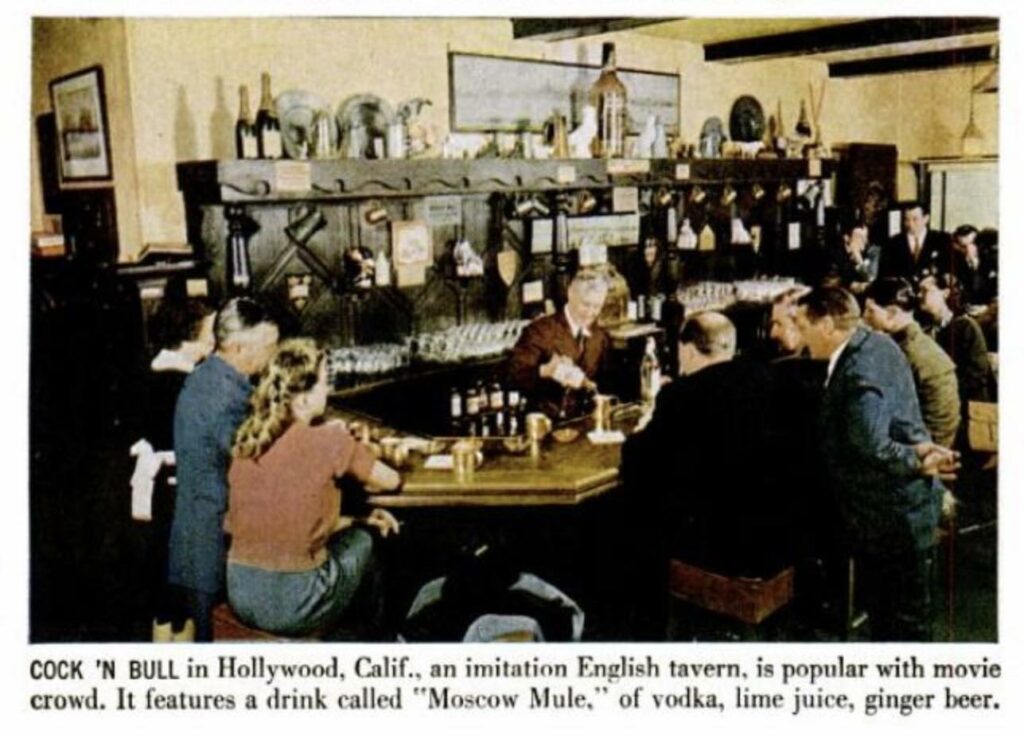
A parte questa piccola curiosità, in questo articolo andremo a vedere la storia del Moscow Mule e di come due imprenditori riuscirono a prendere due prodotti poco venduti, vodka e ginger beer, e inventare un drink di tendenza.
Come sempre ti citerò fonti, allegherò testi originali che ti consiglio di leggere per capire a pieno che cosa è veramente successo. Purtroppo le sfumature, i dettagli che fanno tutta la differenza, possono essere colti solamente leggendo i testi originali in lingua originale.
Le origini del Moscow Mule
Sull’origine del Moscow Mule ci sono 3 importanti testimonianze.
La prima che tratteremo è quella di John Gilbert Martin, ex presidente della Heublein Brothers, azienda produttrice e venditrice di bevande alcoliche che acquisì negli anni ’30 del ventesimo secolo i diritti di vendita della Smirnoff Vodka.
La seconda (ma prima in ordine temporale) è quella pubblicata nel 1948 dalla giornalista Clementine Paddleford sul New York Herald Tribune e la terza è un’intervista a Wes Prince, bartender del Cock ‘n’ Bull, pubblicata nel 1951 sul Schenectady Gazette.
La testimonianza di John Gilbert Martin
La testimonianza di John Gilbert Martin è documentata in un video del quale purtroppo non conosco la data di registrazione. Sicuramente fu registrata prima del 1986, anno della scomparsa di Martin.
Martin ci racconta di come abbia inventato il Moscow Mule insieme a Jack Morgan, proprietario del Cock n’ Bull e dell’omonima ginger beer, e a Oseline Schmidt, proprietaria di una azienda che produceva rame.
Non c’è nulla di troppo romantico; spinti da necessità, i due imprenditori miscelarono i rispettivi prodotti e si inventarono uno stratagemma per convincere i bartender a provare la miscela: in cambio di una foto polaroid avrebbero dovuto assaggiare la bevanda, che non era poi così male e divenne ben presto famosa.
Vi lascio al video di Martin. Per chi preferisse leggere, sotto c’è la trascrizione del video.
“We handled Smirnoff vodka as an agent for several years and then in 1939 the Smirnoff company went bankrupt and Kunett tried hard to sell it. Finally he came to me and offered me the business for $50,000.
If Smirnoff was to have a chance of competing with whiskey in America it had to be as a mixer and therefore I went to California with Rudolph Kunett and through him met a fellow by the name of Jack Morgan. Jack Morgan owned the Cock’n Bull Restaurant in Los Angeles.
So he had Cock’n Bull Ginger Beer made for him in Los Angeles and of course couldn’t sell it because Americans didn’t like Ginger Beer, they liked Ginger Ale. Morgan had a girlfriend. A great big, beautiful, buxom woman by the name Oseline Schmidt who had inherited a copper factory from her father, but unfortunately hadn’t found any sale for its products.
And so with Kunett one evening, Morgan, Oseline Schmidt and I met at the bar of the Cock’n Bull Restaurant and tried to think up a drink for Smirnoff vodka with ginger beer. We finally came up with the name Moscow Mule. Just how it originated, I don’t know, but I imagine that it had to do with the kick.
The Moscow Mule eventually developed to be a two ounce drink of Smirnoff vodka put in a copper mug made by Oseline, then mixed with ginger beer from Morgan’s Cock’n Bull ginger beer bottle and a squeeze of lime.
The big difficulty, of course, was to get a bartender to even try it. He’d say, “What, drink that stuff? Russian dynamite and drop dead? No sir.”
So I developed a scheme to get him to try it. Polaroid had just came out with a camera that took a picture immediately. I bought one and I’d go into a bar with a Moscow Mule mug, a bottle of Smirnoff, a bottle of Cock’n Bull Ginger Beer and offered to make the bartender a drink for free if he would just try it. And I said, “You know, if you will try it I will give you a picture of you drinking it which you can immediately take home to your wife.”
He said, “How are you going to do that?” And I said, “Well that’s my business. Just try this drink and I’ll show you.”
So he would reluctantly sip a little Moscow Mule and he said tastes pretty good. I would snap a Polaroid picture of him. In fact, I would snap two. One for him to take home to his wife and one I would use in the bar across the street. It worked wonders and of course the press got onto it and it received tremendous publicity at that time. No doubt it was the key influence in making the Moscow Mule famous throughout America.
The Moscow Mule, of course, was the first mixing drink originated by Smirnoff. Then followed many others. The Screwdriver, which is orange juice and Smirnoff vodka. The Bloody Mary, which George Jessel raised fame to having founded, but actually was started in England many years ago and was made with gin, tomato juice and Worcester sauce. Then followed the Bull Shot, the Gimlet and many other mixed drinks. It was the mixability of Smirnoff that by accident again made it famous.”
La testimonianza di Clementine Paddleford
La seconda testimonianza che vediamo è quella di Clementine Paddleford, giornalista.
È la seconda che trattiamo, ma è la prima in ordine temporale, infatti è datata 1948 e possiamo trovarla nel giornale americano New York Herald Tribune.
Qua sotto ti riporto il testo originale dell’articolo. Ti consiglio di leggerlo ma, se hai fretta salta, salta direttamente alla mia analisi in cui analizzo le differenze con quella di Martin.
28 July 1948, New York (NY) Herald Tribune, pg. 12, col. 6:
Experiment With Vodka Lead to Moscow Mule
Lime Juice, Ginger Beer and Ice Cubes Are Added to Give Potent New Drink
By Clementine Paddleford
The Moscow Mule has kicked its way into town. Two drinks are guaranteed to rehabilitate a nerve-riddled executive after a bad day in the office. In the most unlikely places matrons are pouring mules like pink tea and giggling like co-eds. The nicest thing about the mule is that it doesn’t make you noisy and argumentative, or quiet and sullen, but congenial and in love with the world. One wag of its tail and life grows rosy.
TEAM WORK—The mule was born in Manhattan but “stalled” on the West Coast for the duration. The birthplace of “Little Moscow” was in New York’s Chatham Hotel. That was back in 1941 when the first carload of Jack Morgan’s Cock ‘n’ Bull ginger beer was railing over the plains to give New Yorkers a happy surprise. Here was ginger beer in crockery bottles tasting exactly like that of old England.
Three friends were in the Chatham bar, one John A. Morgan, known as Jack, president of Cock ‘n’ Bull Products and owner of the Hollywood Cock ‘n’ Bull Restaurant; one was John G. Martin, president of G. F. Heublein Brothers, Inc. of Hartford, Conn., and the third was Rudolph Kunett, president of the Pierre Smirnoff, Heublein’s vodka division. As Jack Morgan tells it, “We three were quaffing a slug, nibbling an hors d’oeuvre and shoving toward inventive genius.” Martin and Kunett had their minds on their vodka and wondered what would happen if a two-ounce shot joined with Morgan’s ginger beer and the squeeze of a lime. Ice was ordered, limes procured, mugs ushered in and the concoction put together. Cups were raised, the men counted five and down went the first taste. It was good. It lifted the spirit to adventure. Four or five later the mixture was christened the Moscow Mule—and for a number of obvious reasons.
ALIVE AND KICKING—Not knowing about the coming of Pearl Harbor, the friends chipped in and ordered 500 copper mugs embossed with “Little Moscows.” By this time the carload of Cock ‘n’ Bull ginger beer had reached Manhattan, such places as Club 21, the Waldorf Astoria, the Sherry Hetherlands, gave it an enthusiastic reception.
Then came Tojo, and Jack Martin departed for overseas service. Cock ‘n’ Bull ginger beer fought a home-staying battle with the O.P.A., the glass shortage, the national indigestion. It survived, but only in small but important precincts in Los Angeles.
Now again the mule is going places at a gallop–east of the Mississippi Heublein and Borthers, Inc., are skippering Cock ‘n’ Bull products. Ginger beer is being bottled in a new factory in Yonkers, (Col. 7—ed.) Heubleins have the Vodka, Florida has the limes.
Come hai potuto notare le testimonianze di Martin e Paddleford differiscono tra di loro.
La prima, e più importante differenza, riguarda il luogo della creazione del drink.
Nella testimonianza di John Martin il luogo di nascita del Moscow Mule è il Cock n’ Bull di Los Angeles mentre nella seconda testimonianza il luogo è il Chatham Hotel di New York.
La seconda differenza è la presenza di Oseline Schmidt: nella testimonianza di Martin era presente il giorno della prima creazione del drink come colei che ha introdotto le tazze in rame. Nella testimonianza di Paddleford non viene menzionata.
L’intervista a Wes Prince
L’ultima, ma non per ordine di importanza, traccia sulle origini del Moscow Mule è un’intervista a Wes Prince, bartender del Cock’ n’ Bull di Los Angeles, pubblicata nel 1951 dal giornale americano Schenectady Gazette.
Come sempre riporto qua sotto l’intervista originale. Se non vuoi leggerla per intero, saltala e vai direttamente alla mia analisi.
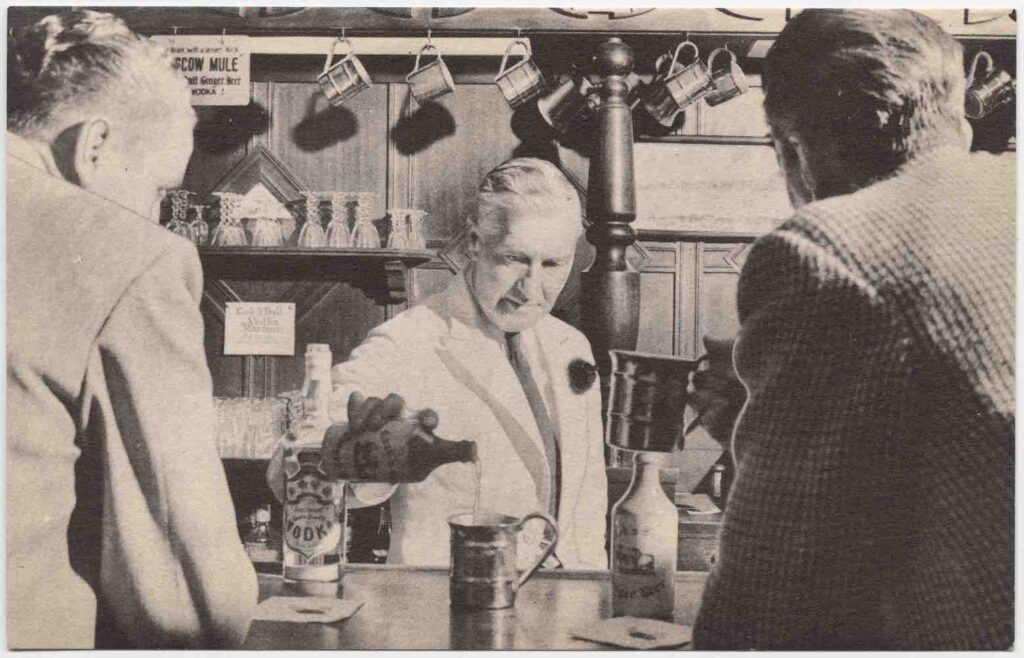
20 November 1951 – Schenectady Gazette
“Moscow Mule” – Inventor Bars Name Change by Aline Mosby
Hollywood, Nov. 19 (UP) “Art rose above politics in movieland today. The man who invented the “Moscow mule” served notice he refuses to change its name.
The Moscow mule, to nonitiates in the audience, is a lethal potion imbibe during that latter day American ritual, the cocktail hour.
It consist of vodka, ginger beer and lime juice, and tastes like supercolossal limeade until you pick yourself off the floor.
Of late there has been some pretty loose talk around brass rails, and other talking pieces, about changing the drink’s moniker to a patriotic “Washington Wallop.”
But bartender Wes Price who mixes exotic drinks for movie stars, announced that he doesn’t think liquor and politics should mix.
“Some people holler about those things, but 99 percent of my customers don’t pay any attention to that name,” he said. “Art is art. To change the name of my drink because of the world situation would be like refusing to listen to Tchaikovsky’s music.”
The twinkly-eyed bartender pointed out that Hollywood’s latest contribution to the world’s culture was dreamed up during World war II when Uncle Joe and Uncle Sam were closer-than-a-quarter-to-nine, anyway.
Wes was moved to the creation, he confessed, to get rid of soma extra ginger beer and vodka at his famous bar In the Cock n’Bull, a splushy English restaurant on Hollywood’s nightclub row, the Sunset Strip.
“I just wanted to clean out the basement.” he chuckled. “I was tryin’ to get rid of a lot of dead stock—Cock n’ Bull ginger beer that we made and 100 case of vodka that we had to buy then in order to get other liquors.
”I fixed this drink and served it first to Broderick Crawford and Rod Cameron. It caught on like wildfire.”
Wes dishes up his Moscow Mules in copper mugs. “Somethin’ different, so people will ask what’s in it.” and so your fingers nearly freeze off, too.
Soon consumption of vodka shot up to 200.000 cases a years in the Plaster City.
And the Cock’ n’ Bull got on the map and made a fortune selling its ginger beer and “Moscow Mule” copper mugs around the country.
Several thousand mugs are stolen per year in the bar, though,” he added. “So we had to raise the price of the drink from 70 to 75 cents”.
Fame brought another problem to creator Price. He feels there’s some jealousy among other bartenders over his work, so he’s leaving the restaurant soon after 14 years.
“I never got an extra cent for my invention,” he sighed. “I wasn’t truly appreciated.
Secondo questa testimonianza, il creatore del Moscow Mule è proprio l’intervistato, ovvero il bartender Wes Price.
Curiosa è la motivazione che ci racconta: Wes sostiene di aver inventato questo drink per sbarazzarsi delle scorte di vodka e ginger beer.
Servito il Moscow Mule alle due stars del cinema Broderick Crawford e Rod Cameron, il drink prese subito piede diventando immediatamente popolare anche grazie al suo singolare contenitore, la tazza in rame.
Contenitore che portò un aumento del costo di vendita del Moscow Mule a causa dei furti delle stesse mug: una fenomeno che continua a verificarsi anche ai giorni nostri.
Interessante festa dal nome “Moscow Mule Party”; in queste foto di Jerome Zerbe si possono vedere le tazze in rame utilizzate nel 1948.
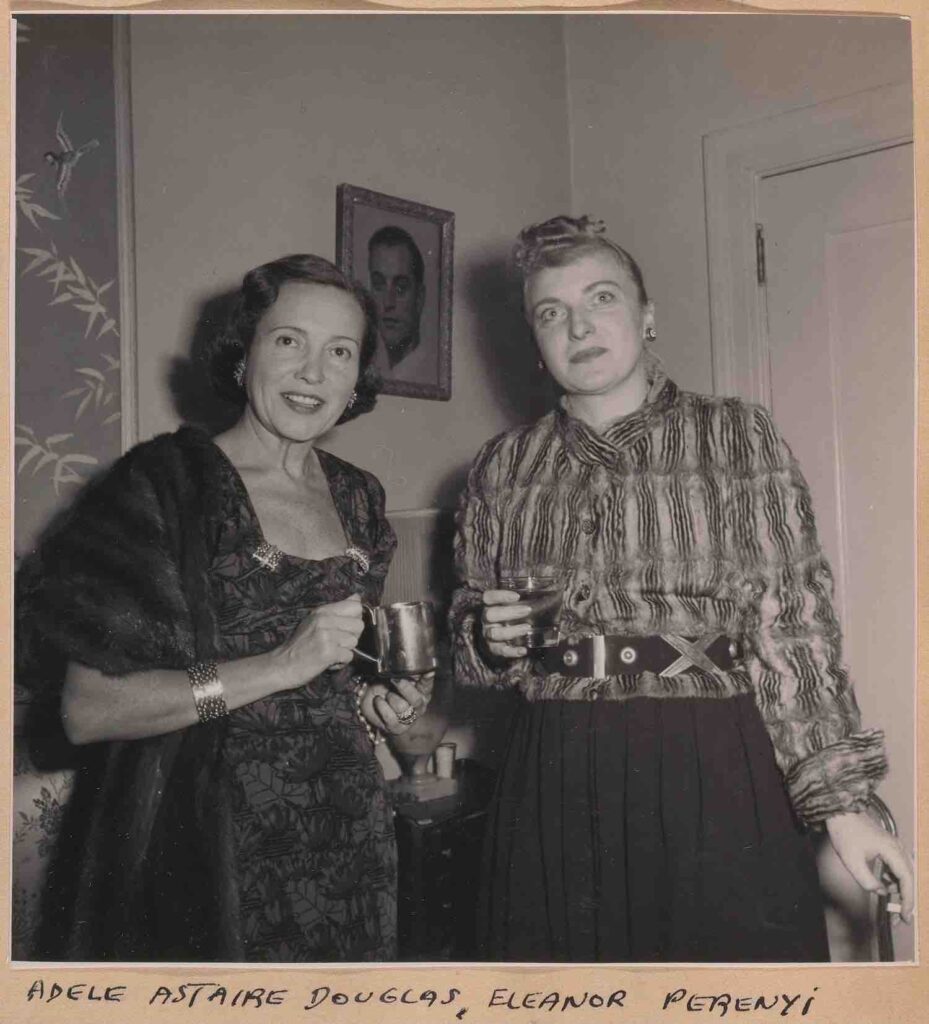
Jerome Zerbe, fotografo americano (1904 – 1988) è considerato uno dei primi paparazzi.
Fu il primo a dedicasi nel riprendere personaggi famosi in occasioni pubbliche.
Tazze in Rame
Nel video pubblicato a inizio articolo John Gilbert Martin ci dice che le tazze in rame sono state introdotte da Oseline (Ozaline) Schmidt.
Tuttavia c’è un altra storia altrettanto probabile.
Sophie Berezinski, immigrata russa negli Stati Uniti d’America, portò con se 2000 tazze in rame prodotte dalla fabbrica del padre in Russia la “Moscow Copper Co.”.
Dopo diversi tentativi nel vendere i suoi prodotti entro nel posto giusto nel momento giusto.
Il giorno e il luogo fortunato fu proprio quando John Gilbert Martin e Jack Morgan si incontrarono nel 1941 al Cock n’ Bull di Los Angeles.
La storia di Sophie Berezinski è possibile leggerla nel sito della Moscow Copper Co cliccando qui.
Le prime tracce storiche
Per completezza di informazioni, indipendentemente da chi fu a introdurre le tazze in rame o a miscelare per la prima volta il drink, vi dico che la prima testimonianza scritta del Moscow Mule è datata 1942. In questa testimonianza non si farà nessun riferimento al contenitore in rame.
”15 Dec 1942 – Monrovia News-Post
Inside Hollywood by Edith Gwynn
There’s a new drink that’s a craze in the movie colony now. It’s called Moscow Mule. Recipe, equal parts Vodka, lime juice and ginger beer!”.
Per la tazza dobbiamo aspettare una pubblicazione del 1943. Fu Oscar Haimo nel Cocktail Digest del 1943 ad indicarci il contenitore dove servire il drink.
”1943 – “Cocktail Digest” by Oscar Haimo
Moscow Mule
2 oz. Vodka
1 split Ginger Beer
Crushed Ice
Serve in Mug
Decorate with sprigs of mint.”
Il ritorno del Moscow Mule e il Cetriolo.
Nella seconda metà degli anni ’50 il Moscow Mule era oramai passato di moda, scalzato da altri drink come il Bloody Mary o lo Screwdriver.
1955 – What, when, where, and how to drink di Richard L. Williams
“Then, one day shortly after World War II, a man mixed vodka and ginger beer in a copper mug and called it a Moscow Mule. Introduced at the Cock ‘n’ Bull, an English-accented bar and grill on the Sunset Strip in Beverly Hills […]
[…] Today the Mule is dead on the street where it was born; the copper mugs hang unused on the barroom walls-but the taste for vodka remains. The Screwdriver, the Vodka Martini, the Tomato Sam and the vodka Collins are drinks to be reckoned with...”Ma circa una decina di anni fa il drink ritorna a tutti gli effetti sulla cresta dell’onda, diventando uno dei drink alcolici più consumati.
Unico problema: la presenza del cetriolo.
Il cetriolo ha causato, e causa, accese discussioni tra colleghi e tra clienti e bartender. C’è chi dice che migliora il drink, chi invece vuole rimanere fedele alla ricetta originale.
La presenza del cetriolo è stata giustificata in diversi modi.
Un probabile motivo della presenza del cetriolo è che in Russia sia comune accompagnare shot di vodka con dei cetrioli in salamoia, da qui il tuffo del cetriolo nel drink.
L’altra ipotesi è legata al Pimm’s Cup, drink che tra i suoi ingredienti vede il cetriolo e che in passato fu inoltre servito in tazze di rame. Facile pensare dunque che il cetriolo fu inserito per sbaglio o meno anche nel Moscow Mule.
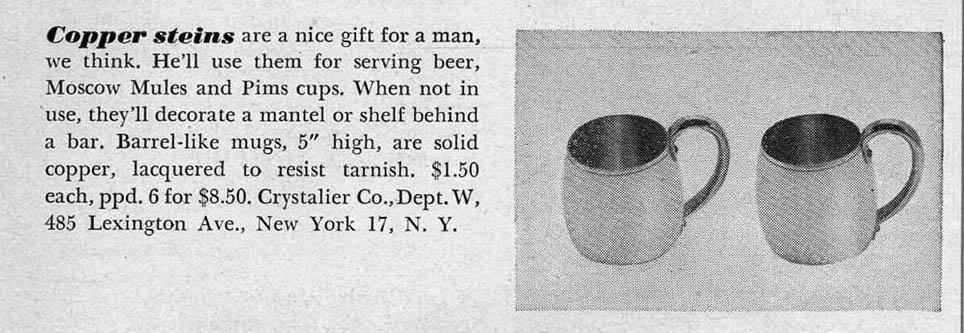
Nel 1949 diverse riviste americane presentavano al loro interno inserzioni commerciali di boccali in rame, ideali sia per il servizio della birra che del Moscow mules e Pimm’s cup.
Motivazioni queste accettabili se si pensa a locali tipicamente “British” come il Cock n’ Bull.
Purtroppo non ho trovato alcuna fonte che citasse il cetriolo in relazione al Moscow Mule e al Pimm’s Cup.
Iniziai dunque a cercare di tracciare l’inizio di questo cambiamento nel Moscow Mule o di questo equivoco.
Una delle prime tracce che trovai fu nel libro “Pocket Bar Book” del 1981, scritto da Michael Jackson (non il cantante).
Jackson ci dice che il Moscow Mule è un’invenzione americana composta da vodka, ginger beer, lime e un peel di cetriolo.
Successivamente trovai diversi manuali da bar che presentavano nella ricetta l’ingrediente sospetto. Manuali che tuttavia presentavano una sola ricetta, come accade in quasi tutti libri.
Un giorno però mi sono imbattuto nell’Esquire Drink Book di Frederick A. Birmingham del 1957. In questo libro erano presenti due ricette distinte, una con e una senza cetriolo.
Come puoi vedere nella foto qua sotto, nella ricetta con il cetriolo era indicato anche ”Wonder Palms Hotel, Palm Springs, California”.
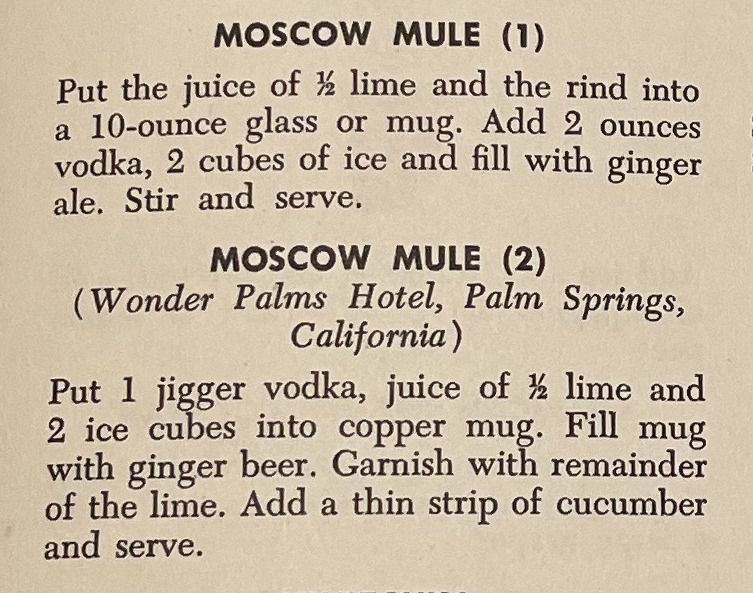
Questa stessa ricetta, con la stessa annotazione, l’ho trovata anche nel magazine Esquire, numero di agosto 1951.
”1951 – Esquire Magazine – August
Palm Springs’ Wonder Palms Hotel
Moscow Mule
Put one jigger of vodka, juice of 1/2 lime and two ice into copper mug. Fill mug with ginger beer. Garnish with remainder of the lime. Add a thin strip of cucumber and serve.”
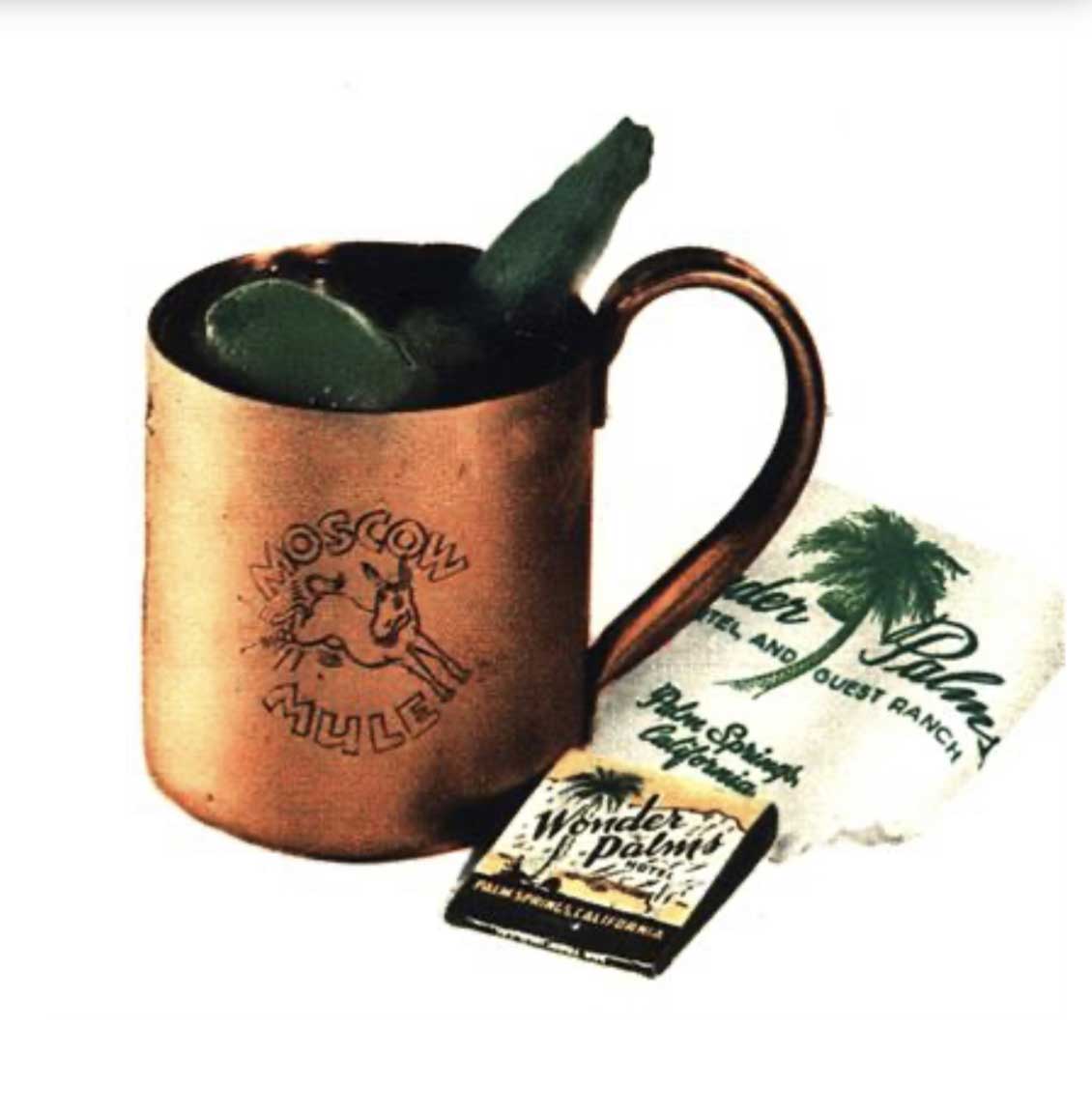
Questi due reperti sono molto importanti perché ci suggeriscono che la ricetta con il cetriolo fu esclusivamente una proposta alternativa a quella originale offerta al Wonder Palms Hotel di Palm Springs in California.
Una rivisitazione che a distanza di 70 anni crea ancora grandi discussioni.
Quindi, chi ha inventato il Moscow Mule?
A parte qualche piccola differenza tra le due principali narrazioni, sono convinto che il Moscow Mule sia stato creato dai nostri due imprenditori (Martin e Morgan) che, con l’intento di commercializzare i loro due prodotti, riuscirono a realizzare un drink di successo.
Vorrei concludere con una riflessione che ti può aiutare se continuerai a leggere i miei articoli e vorrai iniziare a ricercare la storia dei drink.
Come per gli aspetti tecnici che Giovanni tratta, anche per gli aspetti storici ci si basa su delle fonti. Un conto sono le supposizioni, i ragionamenti, le ipotesi, un altro le tracce storiche verificabili come articoli di giornali, ricettari e interviste.
Le supposizioni hanno bisogno, ad un certo punto, di essere supportate da delle tracce storiche, altrimenti si rimane nel limbo del ‘possibile’ e le supposizioni rimangono supposizioni.
Ricordati anche che nuove fonti, che magari scopriremo nei prossimi anni, potrebbero portare alla luce nuovi dettagli e, perché no, riscrivere la storia come la conosciamo ora.
Buona miscelazione,
Lucio
Abbiamo parlato di
